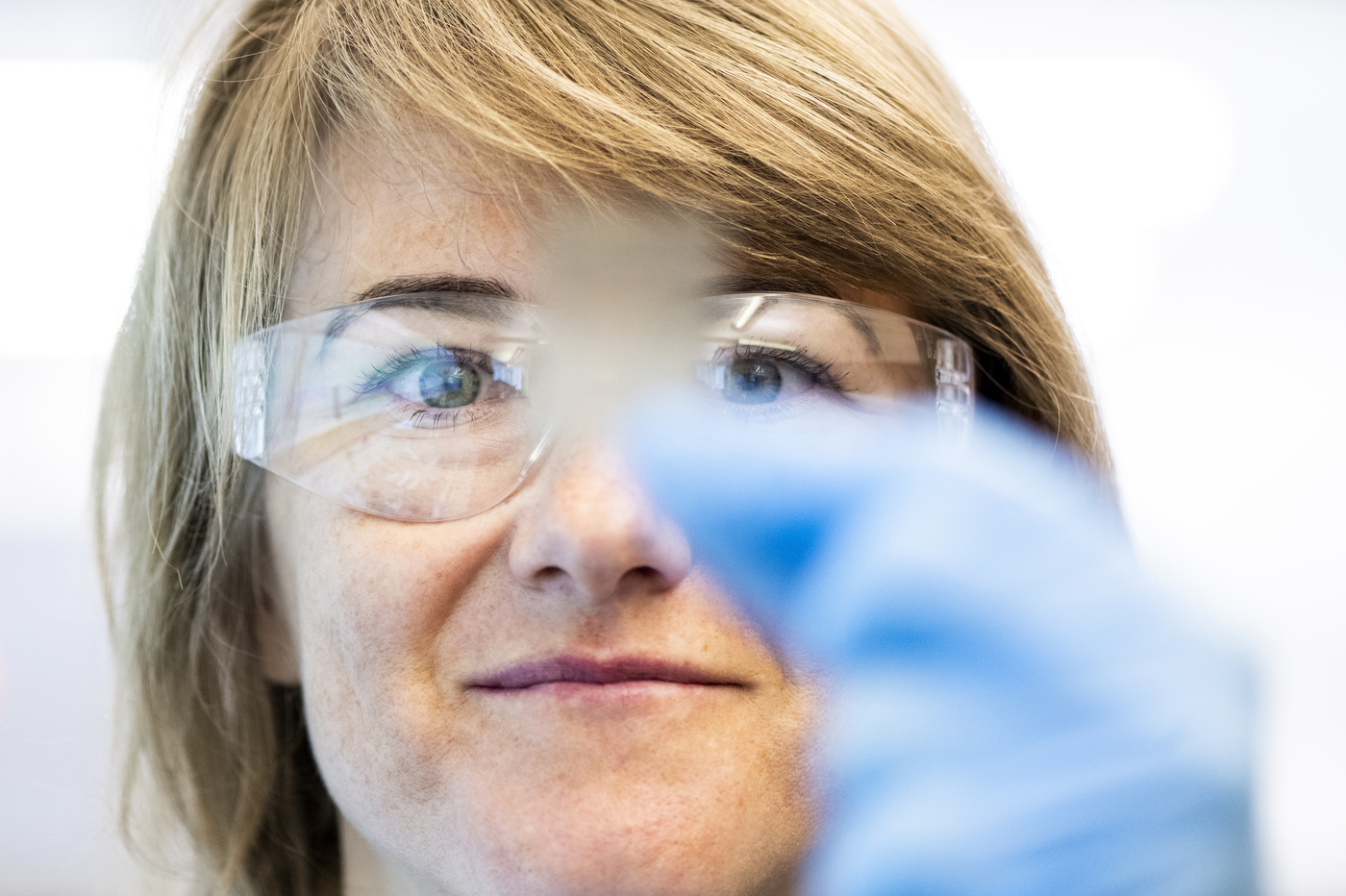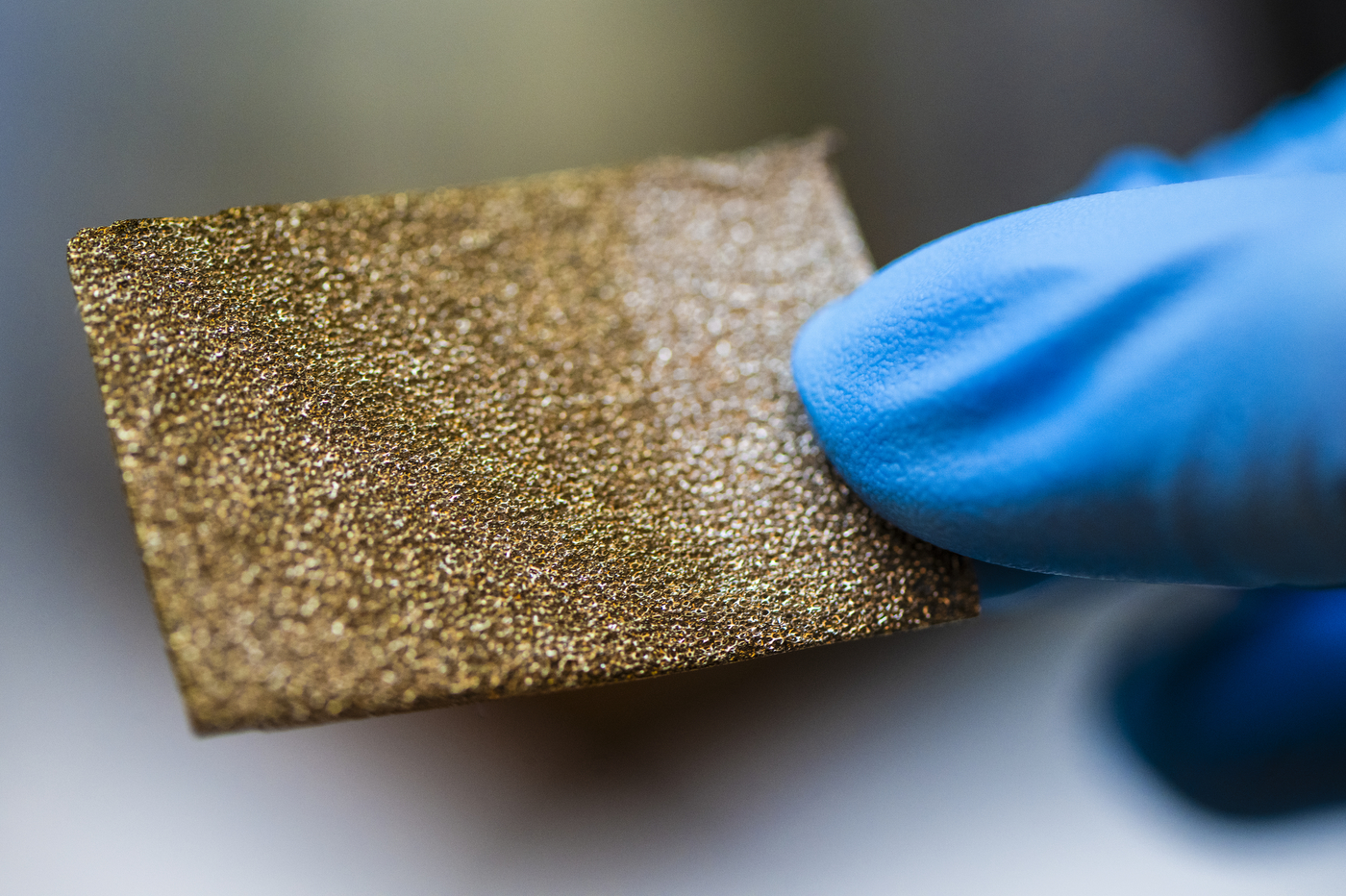Advancing Early Cancer Detection
ChE/COS Assistant Professor Magda Barecka has discovered a new, more efficient, and environmentally friendly method of separating carbon isotopes, which has the potential to advance both the early detection of cancer and the sustainable production of chemicals. Her research was published in the journal iScience.
This article originally appeared on Northeastern Global News. It was published by Alena Kuzub. Main photo: Magda H. Barecka, Northeastern assistant professor with a joint appointment in chemical engineering, chemistry and chemical biology in the College of Science, works in a lab in the Egan Research Center on the Boston campus on Friday, Oct. 6, 2023. Photo by Alyssa Stone/Northeastern University
Discovery in electrochemistry has potential to advance early cancer detection, production of sustainable chemicals
A recent discovery has the potential to advance both the early detection of cancer and the sustainable production of chemicals such as ethanol, which is widely used as a mixture in gasoline.
Magda Barecka, assistant professor at Northeastern University with a joint appointment in chemical engineering and chemistry and chemical biology, has reported an unconventional method of separating carbon isotopes from carbon dioxide, a greenhouse gas responsible for global warming, using an electrochemical process.
“This is something that can have both an impact on human health and sustainability,” she says. “But for me, what is the most exciting is just the fact that we really changed the way that we think about separation of isotopes, and that this potentially opens application of stable isotopes to much broader use, including detection of different diseases.”
Isotopes are atoms of the same chemical element that have the same number of protons and electrons but have a different number of neutrons. Isotopes of the same chemical element behave alike in chemical reactions but may have slightly different physical properties and different mass. Stable isotopes are not radioactive and so do not spontaneously undergo radioactive decay.
Carbon isotopes are widely used in medicine and research and development of different methods of medical diagnosis, Barecka says. They can label a specific molecule in a living organism, which gives researchers an opportunity to trace it afterwards.
 |  |
In her research, Barecka focused on an isotope carbon-13, or 13C. Only 1.1% of 13C isotopes exist in nature, and it is very difficult to separate them from the abundant 12C isotopes due to their very similar properties.
The industrial process currently being used requires hundreds of stages, takes a very long processing time, Barecka says, and uses a lot of energy, which leads to high costs and significant environmental impact.
That is why only a limited number of manufacturing facilities in the U.S. and around the world produce 13C isotope. American producers make less than 2,200 pounds of 13C a year.
Read full story at Northeastern Global News